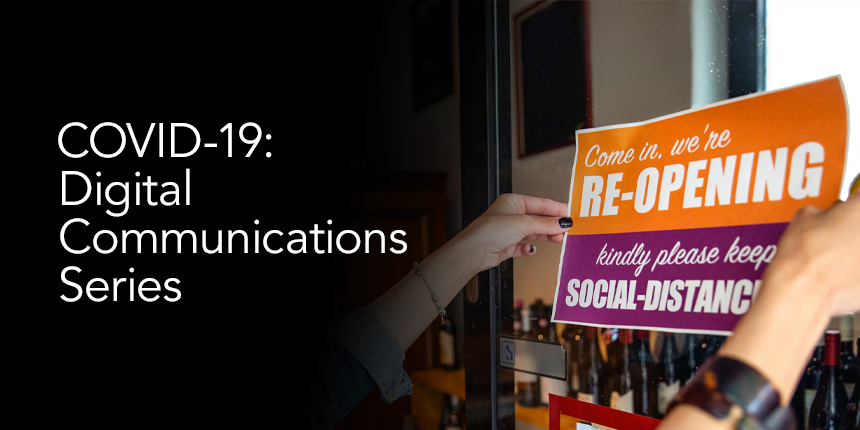As the world begins moving out of lockdowns and into new tiered systems, there’s even more uncertainty about what people can and can’t do. For businesses with local brick-and-mortar locations, this means a shift not only in operations but in the way they need to engage with their audiences.
In times like these, local SEO has the potential to help businesses connect with existing customers and even attract new ones. It all boils down to understanding how users are searching—and, as with most things in this crazy year, the most effective strategies look at things a little differently.
An “open” query doesn’t just mean opening hours anymore
In simpler times, you would expect a query containing the term “open” to be answered with the opening hours of the establishment. Now a query with the term “open” comes with a lot more baggage.
After the lifting of initial lockdowns, many countries saw a blanket reopening of restaurants, gyms, and pubs. But with tiered systems creating a much more fluid experience alongside a wider array of searches with local intent, there is now further uncertainty about which businesses are open—and in what capacity—at the local level.
For instance, since the last major lockdown in the UK ended, there has been a surge in queries about businesses being open or closed:
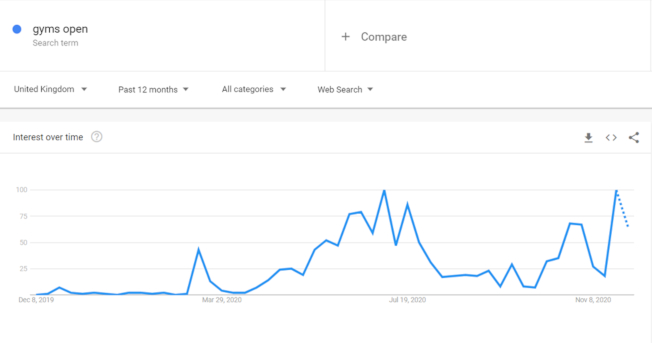

What is open near me?
We have also seen the rise of “open near me” searches. In pre-pandemic times, these searches were normally reserved for those of us not blessed with perfect planning skills. The volume of “hairdresser open near me” searches shortly prior to Christmas 2019 was higher than the peak of similar searches during the initial lockdown:
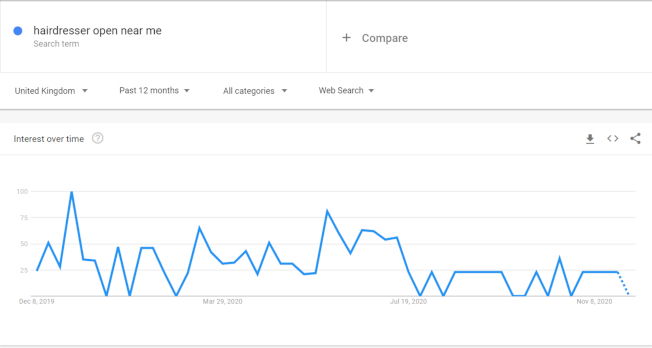
In most other industries, “open near me” search trends seem to be a phenomenon that is unique to 2020:
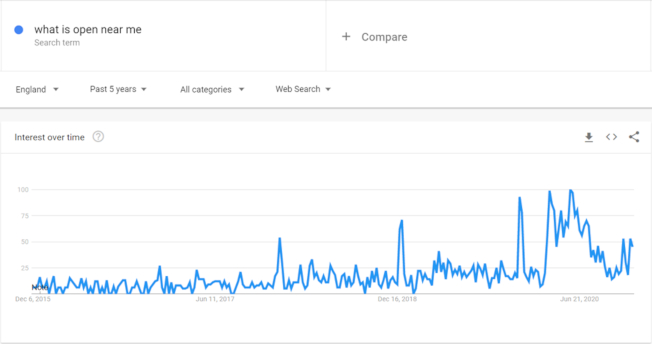
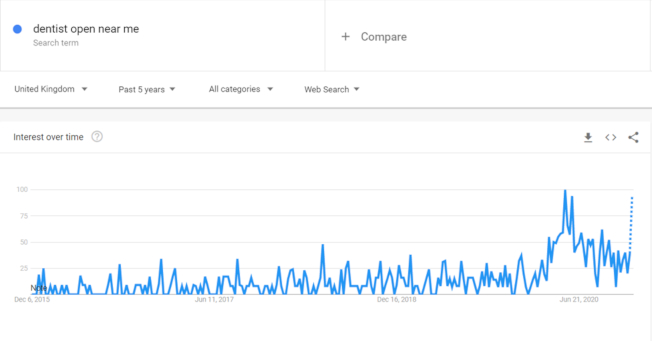
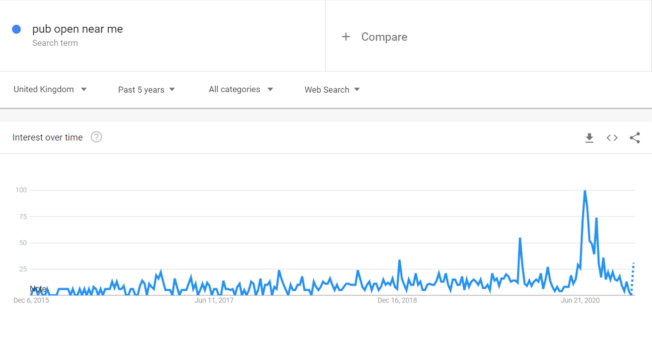
This trend is not only seen in the UK, but is also replicated in the US and Canada:
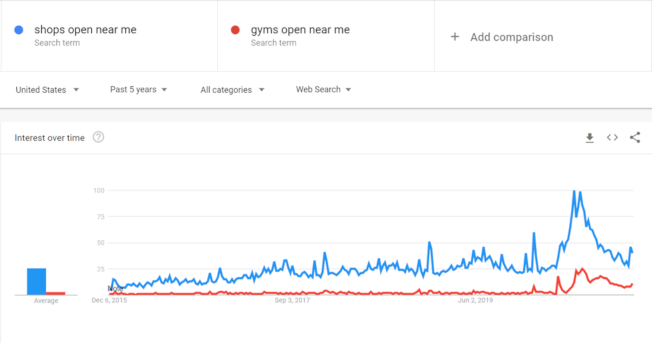
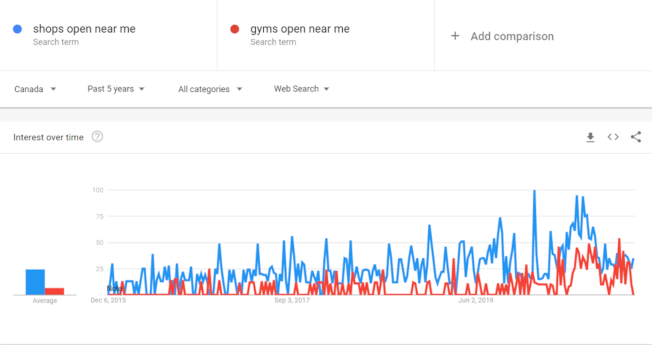
Searcher uncertainty is further exhibited by a sharp rise in searches including “what”. This strongly suggests that users are actively looking for options rather than making a navigational search:
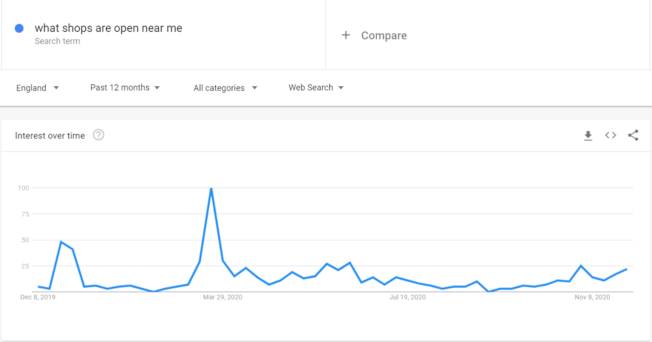
With the uncertainty that has been introduced by tiered lockdown systems, we fully expect “open near me” searches to continue surging through the holiday period and beyond:
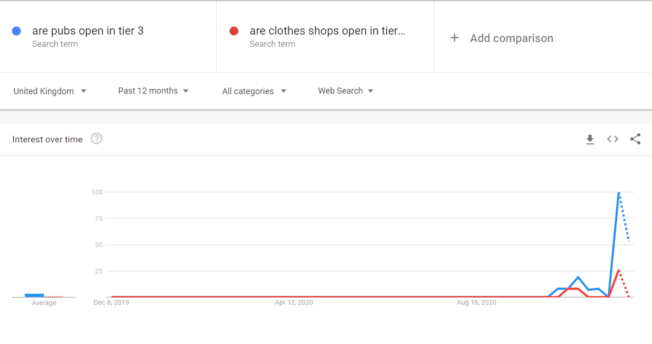
Decoding the search meaning
A search for opening hours is traditionally a transactional search, with “open near me” searches only sporadic in volume. But COVID-19 appears to have changed that. We’re now in a world where “open” and especially “open near me” searches are a fundamental part of the consideration stage.
Google has already spoken at length about the “messy middle” of the user journey, and the pandemic appears to have made the middle an even more complicated space for local search.
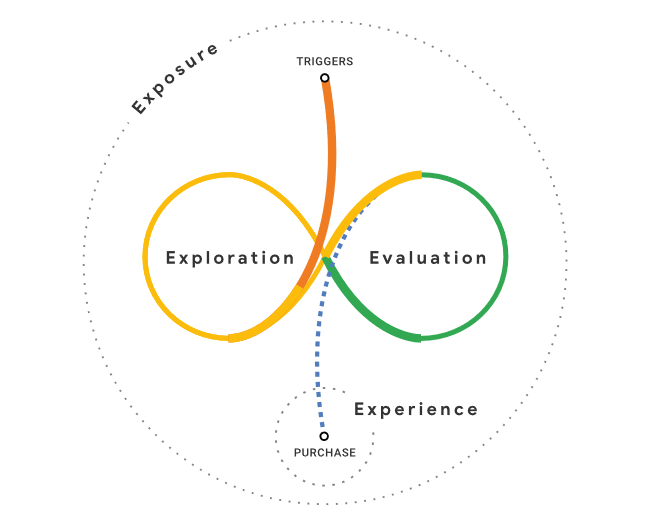
Source: Google
With these previously navigational searches shifting into the comparison and evaluation stages, marketers need to rethink user journeys and how best to communicate with customers to ensure their needs are met at the point of search.
It’s an important consideration because these searches are important, indicating that users want to visit a store but are uncertain about whether they should even try. Being visible at this stage—and communicating certainty—is critical for any business with physical locations. Here’s how:
-
Local business listings
Maps and local listings remain key in these local searches. They represent an easy way to highlight altered opening hours and services available to users at that moment. Google has been quick to give new functionality to local businesses and it is imperative that these are taken advantage of.
Make sure your hours are completely accurate and that your menu of services or products reflects what is available to a user at that time. Local businesses can also make use of Google Posts (especially during the holiday season); a quick way to communicate directly to users on the SERP.
-
Organic results
With location searches moving towards top-of-funnel status, local store pages are more important than ever. We expect many searchers wanting to research what is open may simply bypass maps results and instead browse store locations on a brand’s own website.
Local store pages are a great way to communicate with customers by answering the specific questions they are likely to have. This could be done, for example, through the addition of on-page content that immediately answers common questions about opening hours. This is also the perfect opportunity to add information around the safety precautions that are in place.
If we see that some visitors to local store pages are in the comparison stage, we have a chance to educate them about a specific offering and related services (e.g. click and collect), and provide very localized information—which is even more important with the tiered systems in place.
-
Enterprise-to-Local thinking
By understanding the underlying intent of a user’s search, we can offer them streamlined journeys to get to the information they need. That means making decision-critical information easily accessible in multiple channels. After all, moving a user from a brand- or enterprise-level search to a local store page with the end goal of them visiting a brick-and-mortar location requires a linked-up marketing strategy that puts the user at the center.
Assure your customers—always
A well-executed local SEO strategy offers certainty in times of uncertainty. Whether your audience is seeking more information or simply wants to know whether or not a location is open, local visibility is key.
Want to know more? Find out how we create tailored, Enterprise-to-Local strategies that empower multilocation businesses to engage their customers, make meaningful connections, and drive transformative growth.
